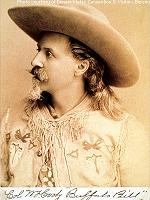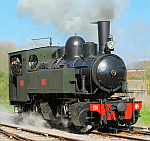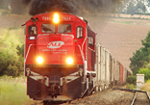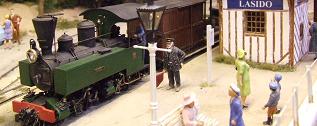Ca date de 2005.. mais c'est à découvrir !
http://www.czimages.com/CZMemories/frtr ... _index.htm
Un train refais surface du canal de Panama.
12 messages
• Page 1 sur 1
Re: Un train refais surfasse du canal de Panama.
l'état de la loco renflouée est intéressant, ça me rappelle un peu certaines "patines" un peu exagérées sur des modèles qui finissent pas ressembler à des tas de rouille...  (et je parle en connaissance de cause vu que j'en ai fait moi-même..)
(et je parle en connaissance de cause vu que j'en ai fait moi-même..)
 (et je parle en connaissance de cause vu que j'en ai fait moi-même..)
(et je parle en connaissance de cause vu que j'en ai fait moi-même..)-

konst - Messages: 166
- Enregistré le: 28 01 2013 à 12:32
- Localisation: Suisse
Re: Un train refais surfasse du canal de Panama.
on en à déja parlé .....quelques échos
http://www.eurotrib.com/story/2007/12/14/01224/074
http://www.eurotrib.com/story/2007/12/14/01224/074
-

Buffalo Bill - Messages: 2987
- Enregistré le: 30 01 2011 à 14:06
- Localisation: Charente
Re: Un train refais surfasse du canal de Panama.
Bonsoir
Eh ben , Bien heureuse la 130 T Cail préservée au CFBS
, Bien heureuse la 130 T Cail préservée au CFBS  !
!
Eh ben
 , Bien heureuse la 130 T Cail préservée au CFBS
, Bien heureuse la 130 T Cail préservée au CFBS  !
!- MGO 825
- Messages: 850
- Enregistré le: 23 10 2014 à 23:22
Re: Un train refais surfasse du canal de Panama.
J'ai l'impression que l'on confond les locomotives et les écartements.
La machine qui a été renflouée du lac Gatún est une 030T en 5 ft (1524 mm).
photo : Nils Öberg
Didier.
La machine qui a été renflouée du lac Gatún est une 030T en 5 ft (1524 mm).
photo : Nils Öberg
Didier.
-

Didierd - Messages: 2400
- Enregistré le: 02 07 2013 à 11:31
Re: Un train refais surfasse du canal de Panama.
En effet, l'écartement de l' "ancien" Panama Railway était de 5'/1524 mm (l'actuel étant fort logiquement d'écartement standard). Ne me demandez pas pourquoi...
Par ailleurs je n'ai aucune idée d'un éventuel réseau à voie étroite à Panama, en service ou disparu, hormis les "mules" de halage aux écluses.. Si quelqu'un a des infos..
Domi
Par ailleurs je n'ai aucune idée d'un éventuel réseau à voie étroite à Panama, en service ou disparu, hormis les "mules" de halage aux écluses.. Si quelqu'un a des infos..
Domi
-

domi - Messages: 402
- Enregistré le: 29 08 2014 à 10:23
- Localisation: Neuilly sur Seine (Ile de France), La Petite Verrière (Saône et Loire)
Re: Un train refais surfasse du canal de Panama.
Quelques CPA des 030 du chantier du canal ,période Française.
Mais il à certainement existé d'autres réseaux sur l’isthme ,agricole par exemple...
Mais il à certainement existé d'autres réseaux sur l’isthme ,agricole par exemple...
-

Buffalo Bill - Messages: 2987
- Enregistré le: 30 01 2011 à 14:06
- Localisation: Charente
Re: Un train refais surfasse du canal de Panama.
Oui, nous en avions déjà parlé sur PME.
Le 130T Cail du CFBS se porte comme un charme. Venez la voir !



Le 130T Cail du CFBS se porte comme un charme. Venez la voir !



Une entreprise qui n'a jamais acheté une Corpet neuve !!! Est-ce bien une compagnie ferroviaire sérieuse ?!...
- YVES
- Messages: 20498
- Enregistré le: 09 03 2008 à 21:06
- Localisation: Picardie
Re: Un train refais surfasse du canal de Panama.
Domi a écrit:
Par ailleurs je n'ai aucune idée d'un éventuel réseau à voie étroite à Panama, en service ou disparu, hormis les "mules" de halage aux écluses.. Si quelqu'un a des infos..
Une réponse....
Le: Chiriquí Land Líneas del Sur
This network started in Chiriquí province and partially overlapped the above mentioned FNC. The UFCO tracks of the same gauge of 914 mm reached Puerto Armuelles port even before the FNC. UFCO also owned a through going line of 36 Kilometres to Laurel and Coto in the southernmost part of Costa Rica. In the long term the United Fruit Co. planned a through going railway of 914 mm gauge from New Jersey (south of New York) to Ciudad de Panama of which, however, only the connexion from the Mexican - Guatemalan frontier (Tecún Umán to the port of La Unión in El Salvador was realised.
The rail network in Chiriquí province reached at the end of the 1920's around 165 Kilometres, and in 1953 there were still 147 Kilometres and in 1970 still 140 Kilometres in service. Although principally built for the transport of bananas and plant workers, from the middle of the 1930's on both networks also other goods and passengers were transported. From the 1950's schoolchildren's transport became more important. The southern network owned in 1953 11 diesel electric locomotives, 39 motor coaches of various types (Edwards, Brill and home made), 2 passenger coaches and 561 goods wagons of which only 44 were destined for the public goods transport.
According to the line rails with meter weights of 14,9 and 29,8 were installed, the lines were, if at all, only ballasted with gravel, the permitted maximum speed for locomotive operated trains was around 24 Kilometres/Hour, for motor coaches 35 kilometres per hour.
In Puerto Armuelles, Progreso and La Concepción there were direct connexions to the FNC, and according to the quantity of goods to be transported even through going trains from one to the other railway. Also in passenger transport there shall have been good connexions between the two railways, according to traveller's descriptions of the 1960's. The public passenger and goods transport on these lines ended, according to information from the Ministry of Agriculture of the Republic of Panama in a report from 1973, in 1971; bananas were still being transported up to the beginning of the 1980's on certain sections; in part FNC shall have carried out transports on behalf of UFCO. When exactly United Fruit stopped transport is not known, but it was during the 1980's, whereas according to the Costa Rican Ministery of Finance the track across the frontier and the customs office connected to it was officially closed per 1st May 1988.
Et le :Chiriquí Land Líneas del Norte or División Bocas
Even before the construction of the southern network the construction of the first lines in Bocas del Toro province began, and the first line went from the port of Almirante and through the town of Almirante to the rural areas behind it. Rapidly the rail network developed in the direction of Guabito, Changuinola and the Rio (river) Sixaola at the frontier to Costa Rica. The "Panama Illness" of the banana plants, which lets the roots not take up any water and thereby letting the plants die, resulted in a strong reduction of banana production in this region from 1929 onwards which forced United Fruit to plant bananas on the other side of the Rio Sixaola in Costa Rica, for which a large steel grid bridge crossing the river and 8 Kilometres of main line in Costa Rica were built. With the extension of banana production in Costa Rica many mostly short branch lines were built to the fincas (plantations). From the middle of the 1930's banana plantation in Panama increased again, and further lines along the Rio Sixaola, on the Panamanian side were built, including the construction of a further bridge over the frontier river. In 1951 the network of the Bocas division had a length of 142 Kilometres and owned 1 steam engine, 10 diesel locomotives, 38 motor coaches, 4 passenger coaches and 144 goods wagons. By 1955 the railway had been completely converted to diesel operation and owned then 15 diesel locomotives. On the lines in Costa Rica the very restricted passenger transport ended already in 1956, plantation workers and their families were still being transported. Between Almirante and Changuinola goods and passenger transport was very lively, in 1960 on the line even 502'000 passengers were transported, but on the size of the banana transport there are no exact data, in a typical year 11'000'000 banana stalks shall have been transported.
In the late 1990's goods transport in Costa Rica reduced considerably, and around 1998 inundations had destroyed the line to the bridge and obviously also destabilised the bridge which meant that traffic across the frontier ceased. The upper bridge was already in the late 1960's destroyed by inundations.
The remaining operation continued over the change of the century, and from 2005 onwards the branch lines and from 2008 onwards tracks of the main line were dismantled, but the last trains operated until a few weeks before being dismantled.
-

Buffalo Bill - Messages: 2987
- Enregistré le: 30 01 2011 à 14:06
- Localisation: Charente
Re: Un train refais surfasse du canal de Panama.
Une explication scientifique à l'état des machines.
Z'avez-vous déjà vu une loco qui patine sur... Une peau de banane !



Z'avez-vous déjà vu une loco qui patine sur... Une peau de banane !



Une entreprise qui n'a jamais acheté une Corpet neuve !!! Est-ce bien une compagnie ferroviaire sérieuse ?!...
- YVES
- Messages: 20498
- Enregistré le: 09 03 2008 à 21:06
- Localisation: Picardie
Re: Un train refais surfasse du canal de Panama.
On note au passage que les Général Électrique ont déjà la bonne couleur .....bien mures 

-

Buffalo Bill - Messages: 2987
- Enregistré le: 30 01 2011 à 14:06
- Localisation: Charente
Re: Un train refais surfasse du canal de Panama.
Merci pour ces précisions.  Eh bé dis donc, un CF à voie de 3' du New Jersey à Panama....
Eh bé dis donc, un CF à voie de 3' du New Jersey à Panama....  Je pense pouvoir affirmer sans trop me tromper que ça aurait été, et de loin, la ligne à voie étroite la plus longue du monde...
Je pense pouvoir affirmer sans trop me tromper que ça aurait été, et de loin, la ligne à voie étroite la plus longue du monde... 
Domi

Domi
-

domi - Messages: 402
- Enregistré le: 29 08 2014 à 10:23
- Localisation: Neuilly sur Seine (Ile de France), La Petite Verrière (Saône et Loire)
12 messages
• Page 1 sur 1
Qui est en ligne
Utilisateurs parcourant ce forum : Aucun utilisateur enregistré et 21 invités
